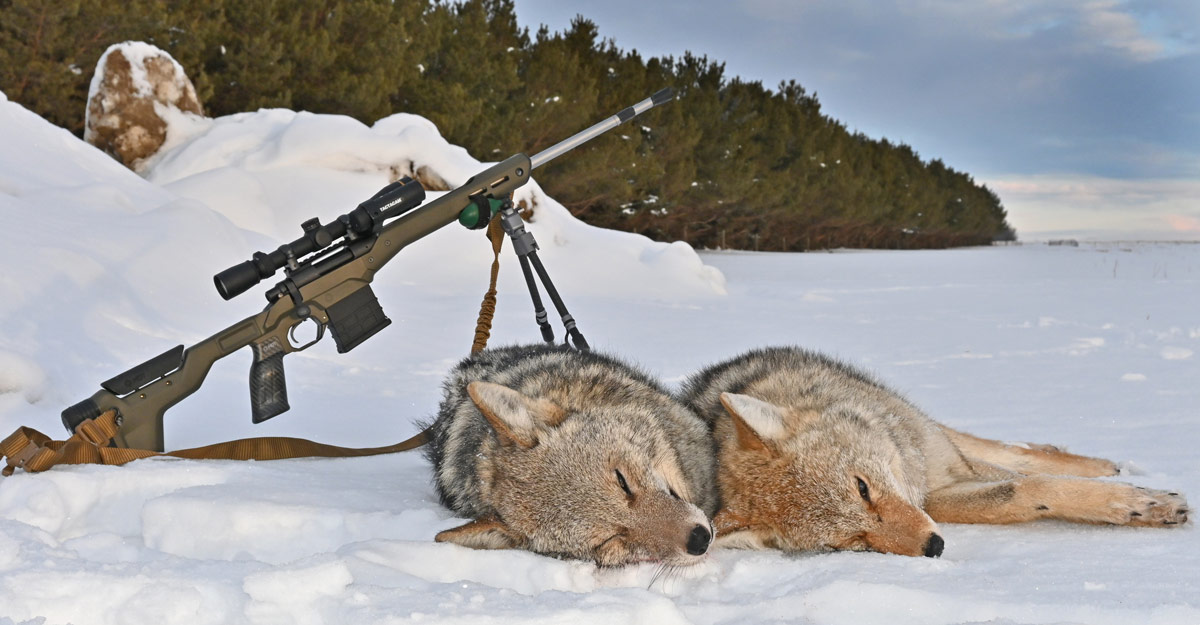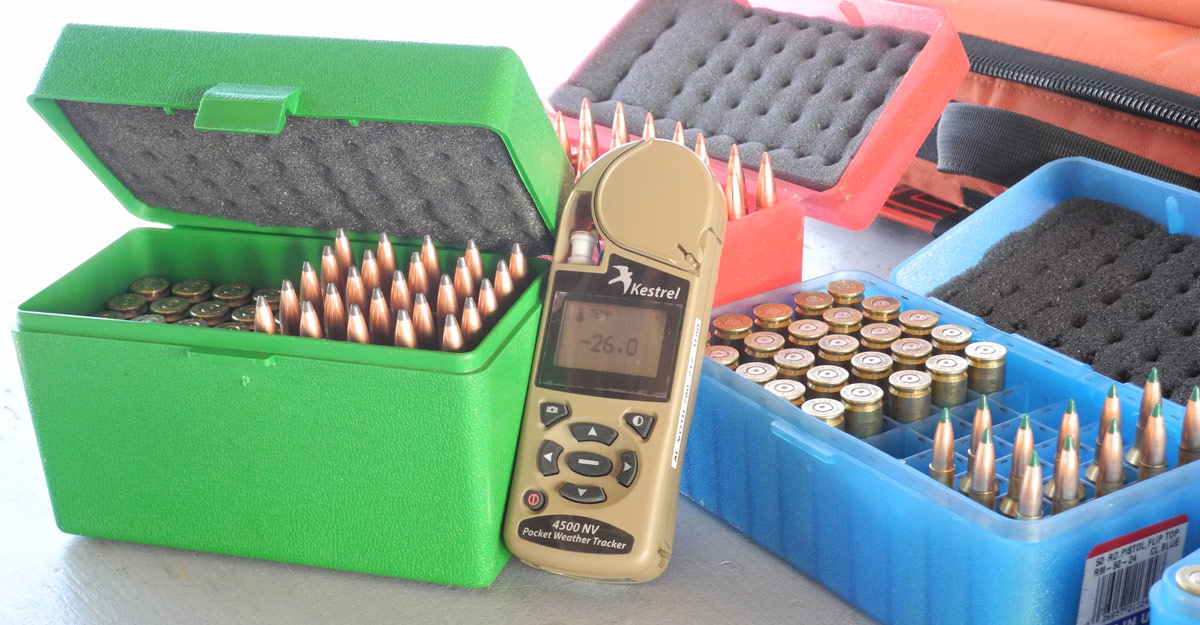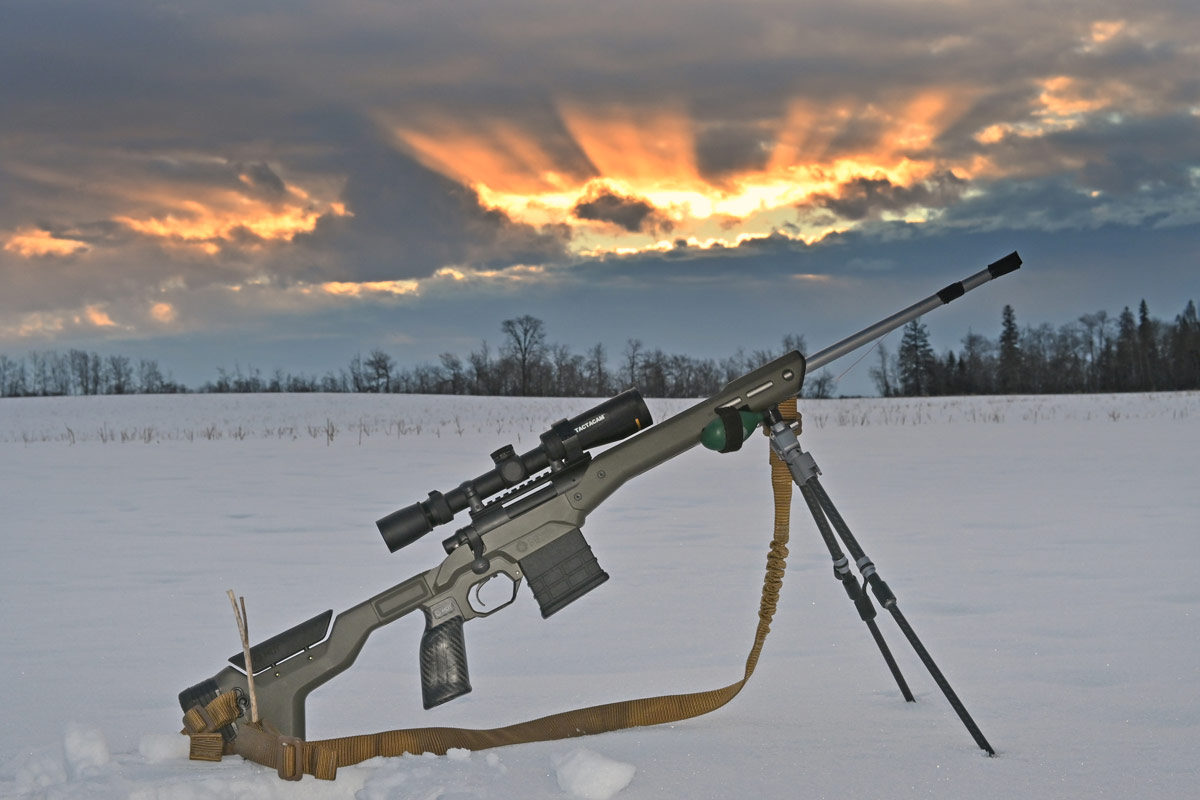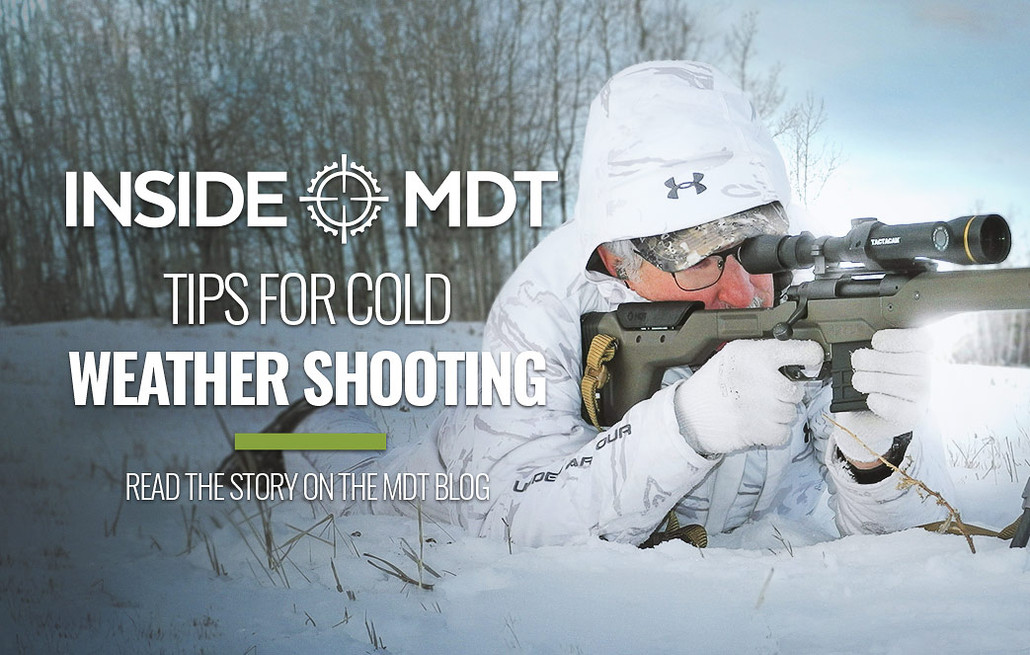Posted by Al Voth on 2022 Jan 27th
Tips for Cold Weather Shooting

The word “cold” is a relative term. If you live in the tropics, the word means something different to you than in Alaska. Geographically, I live somewhere between the two, and it’s minus 20°C (-4°F) outside as I’m writing this. That’s not cold enough to keep me from going hunting or to the range for a bit of trigger time, and I have found myself chasing game in temperatures as low as -40°C (-40°F).
Shooting in cold weather is a complicated topic, and whatever your reason is for dragging a rifle out into the cold, there are some essential rules to follow for ensuring success. Here are some valuable tips I’ve learned from a lifetime of rifle use in cold weather.
More: The Modern Hunting Vest
KEEP YOUR RIFLE FROM FREEZING UP
I’ve seen more than one rifle fail to function after being exposed to cold, including relatively malfunction-proof bolt-actions. Typically, it’s a case of lubricant turning solid in sub-zero temperatures. The traditional solution is to run rifles completely stripped of any lubricant. While that works, the development of synthetic lubes means it’s no longer necessary. Just like synthetic oil is desirable in your truck engine when the weather turns cold, so is synthetic lube a good idea for your rifle. However, I always recommend a test. Pour a little lube into a small open container like a bottle lid and set it in the freezer overnight, then check in the morning to see if it’s still fluid. If so, it’s likely good to use in the cold.

If not prepared properly, even bolt-actions can stop functioning in extreme cold.
BE MINDFUL OF TEMPERATURE SWINGS
Another common cold-weather mistake is the way we move guns in and out of varying temperature environments during cold weather. When using rifles in cold weather, it’s best to keep them cold all the time. Whether at a hunting camp or a range, we all enjoy the opportunity to move into a warm shelter occasionally to take the chill out of our bones. However, the same move can kill a rifle for the day. Move a gun from a cold environment to a warm one, and heavy condensation will inevitably form on the metal surfaces. The result is like taking a rifle into the shower with you. Not a good idea. Keep it cold and dry. When predator hunting and making multiple stands in a day, my rifle stays in the truck box, protected by a padded case but completely cold. When the day is done, the gun comes inside a warm house but stays sealed in the case for hours so it can warm slowly, without condensation forming.
KEEP YOUR BORE CLEAN OF DEBRIS
Cold and snow go together like summer and ice cream. So, protecting our guns from that snow is essential, particularly for hunters, with the most severe gun hazard being a plugged muzzle. It’s incredibly easy to unknowingly poke a rifle muzzle into a snowbank and end up with the potential for a ruined barrel when a shot is fired. Fortunately, the solution is as simple as a tape wrap around the muzzle to keep debris out. The tape won’t affect bullet impact, but it can save your rifle and a hunt.
More: How to Clean your Rifle Chamber

Tape the muzzle when hunting in the snow and keep a spare roll of tape in your pocket to reseal the muzzle after a shot.
ZERO YOUR RIFLE FOR COLD WEATHER
We all know that temperature and subsequent air density can dramatically affect a bullet’s trajectory over long distances. However, it’s important to realize that our zero can be affected by temperature extremes as well. While I make it a point to shoot hand loads with temperature stable powders during cold weather, I recognize that subjecting the rifle and the ammo to extremely cold temperatures can also affect zero. So, whenever possible, zero any rifle at or near the temperature where it will be used. I’ve found that bullet velocities usually drop, groups open up, and slight changes in zero, both vertically and laterally, occur when temperatures plummet.

Minus 26°C (-15°F) is not too cold for a day at the range.
PROTECT YOUR OPTIC
It’s worth mentioning optical sights here because the rifle isn’t of much use if weather kills a scope. Fortunately, most modern scopes are excellent at shrugging off bad weather. Keeping the lenses covered and protected with flip-up lens caps or a quickly removable scope cover is about all that’s usually necessary. Although, I could add that it’s common for snow to find its way onto a scope’s lenses. The instinctive reaction is to take a deep breath and try to blow it off the fluffy stuff. Bad idea! The warm breath will condense on the cold glass, and then you’ll have a coating of ice and snow to deal with. I see people new to cold weather hunting do this all the time. Trying to blow snowflakes off a cold lens will turn a nuisance into a real problem. Instead, wipe it off with an equally cold glove or microfiber cloth.
More: How to Test Your New Rifle Scope

The sunrise on a cold day can be enough to make getting out of a warm bed worth the effort.
While a few precautions are required to be a successful rifle shooter in cold weather, dropping temperatures are no excuse for staying home. There’s some great shooting to be done in cold weather.
ABOUT THE AUTHOR
Al Voth calls himself a "student of the gun." Retired from a 35-year career in law enforcement, including nine years on an Emergency Response Team, he now works as an editor, freelance writer, and photographer, in addition to keeping active as a consultant in the field he most recently left behind—forensic firearm examination. He is a court-qualified expert in that forensic discipline, having worked in that capacity in three countries. These days, when he's not working, you'll likely find him hunting varmints and predators (the 4-legged variety).


 CAD
CAD
 Euro
Euro
